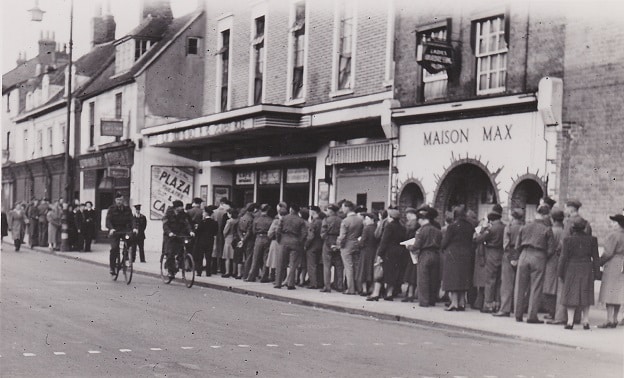The 1940s were a decade of profound paradox for the United Kingdom. Plunged into the darkness and austerity of the Second World War, the nation endured years of hardship, fear, and rationing. Yet, beneath the grim realities of the blackout, a vibrant and resilient cultural landscape adapted, persisted, and ultimately blossomed with the promise of a brighter future. This period saw culture serve as both a shield against despair and a powerful engine for envisioning a new, better society, culminating in the bold aspirations of post-war reconstruction.
The Blackout Curtain: Culture Under Constraint
From 1939, the infamous blackout cast a literal shadow over daily life. Windows were curtained, streetlights extinguished, and vehicles dimmed. This pervasive darkness fundamentally altered social life and entertainment. Cinema-going, a national passion, continued but with audiences navigating dark streets. Theatres, initially closed, soon reopened, offering vital escapism and morale-boosting performances. However, the spontaneity of evening strolls and casual gatherings was severely curtailed.
Despite the restrictions, cultural institutions demonstrated remarkable resilience. The National Gallery famously moved its collection to safety, but continued to host lunchtime concerts, offering solace and artistic uplift amidst the bombing raids. The BBC, a crucial lifeline, adapted its programming to wartime needs, becoming the primary source of news, official messages, and entertainment, uniting the nation through shared listening experiences.
Propaganda and Morale: The Cultural War Effort
Culture quickly became a tool for the war effort, orchestrated by the Ministry of Information. Propaganda wasn’t just about official posters; it permeated every facet of life. Radio broadcasts, films, and even popular songs carried messages of resilience, unity, and determination. Films like In Which We Serve (1942) and The Way Ahead (1944) not only entertained but also reinforced national identity and celebrated courage. The famous “Keep Calm and Carry On” posters, though rarely displayed at the time, epitomised a broader drive to maintain public composure and defiance.
Music played a particularly potent role in morale-boosting. Big band swing, often with a British twist, filled dance halls and airwaves. Vera Lynn, “The Forces’ Sweetheart,” became an iconic figure whose songs like “We’ll Meet Again” offered comfort and a sense of hope to both those at home and serving overseas. Humour, too, was crucial. Radio comedians like Tommy Handley with It’s That Man Again (ITMA) provided much-needed laughter, a vital antidote to the daily anxieties. These cultural efforts fostered a collective spirit, reminding people of their shared purpose and common humanity.
The Arts Endure and Evolve: New Expressions from the Conflict
Even as war raged, the arts continued to evolve, often directly influenced by the conflict. Poets like T.S. Eliot and Dylan Thomas produced significant works, reflecting on themes of despair, faith, and the human condition. Visual artists, including official war artists like Paul Nash and Henry Moore, captured the devastation of the Blitz and the human experience of war with stark realism and emotional depth. Moore’s shelter drawings, depicting Londoners huddled in Underground stations, are particularly powerful.
The Council for the Encouragement of Music and the Arts (CEMA), founded in 1940 (and later to become the Arts Council of Great Britain), played a pivotal role in ensuring that music, drama, and art reached audiences across the country, often in unlikely venues. They brought ballet, opera, and theatre to factory workers and evacuated communities, demonstrating a belief in the democratising power of culture, even in crisis. This period laid foundational stones for broader public access to the arts in the post-war era.
From Victory to Vision: The Post-War Beacon of Hope
As the war drew to a close, the nation’s cultural focus shifted from endurance to aspiration. The collective experience of the war, the shared sacrifices, and the vision of a “People’s Peace” fostered an unprecedented appetite for social change and a belief in collective improvement. This manifested profoundly in the political landscape with the landslide Labour victory in 1945, which ushered in the creation of the National Health Service (NHS) in 1948 – a beacon of universal healthcare, born directly from the desire to build a fairer society.
Beyond the political, cultural planning for a brighter future began even before victory was declared. The concept of the Festival of Britain, though held in 1951, was conceived in the late 1940s. It was envisioned as a national exhibition to showcase British innovation, design, and ingenuity, a celebration of recovery and a forward-looking statement to the world. It aimed to boost morale, encourage trade, and highlight the achievements of a nation rebuilding itself.
The cultural shift from blackout to beacon wasn’t merely about the physical removal of wartime restrictions; it was a profound psychological and societal transformation. The shared experience of the 1940s, while harrowing, also forged a strong sense of national identity and a collective determination to build a better future. The cultural landscape of the decade, from resilient entertainment to powerful propaganda and the emergence of new artistic forms, perfectly mirrored this journey, laying the groundwork for the modern welfare state and a renewed sense of purpose that defined post-war Britain.
Image – Plaza Cinema Theatre at 55 South Street in Chichester during early 1940s. Courtesy Toni Hunt, licensed under the Creative Commons Attribution 2.5 Generic license.
